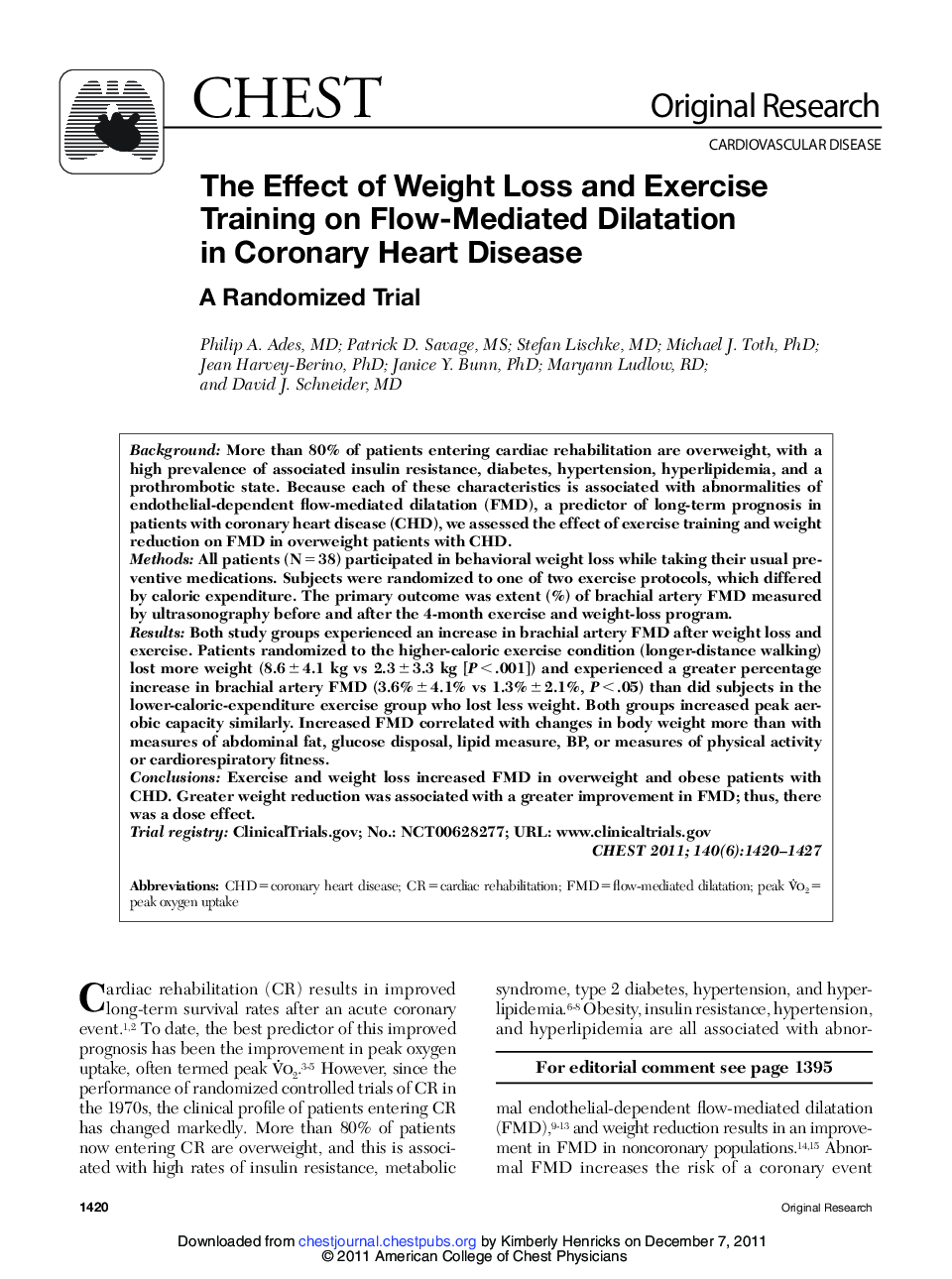| Article ID | Journal | Published Year | Pages | File Type |
|---|---|---|---|---|
| 2901631 | Chest | 2011 | 8 Pages |
BackgroundMore than 80% of patients entering cardiac rehabilitation are overweight, with a high prevalence of associated insulin resistance, diabetes, hypertension, hyperlipidemia, and a prothrombotic state. Because each of these characteristics is associated with abnormalities of endothelial-dependent flow-mediated dilatation (FMD), a predictor of long-term prognosis in patients with coronary heart disease (CHD), we assessed the effect of exercise training and weight reduction on FMD in overweight patients with CHD.MethodsAll patients (N = 38) participated in behavioral weight loss while taking their usual preventive medications. Subjects were randomized to one of two exercise protocols, which differed by caloric expenditure. The primary outcome was extent (%) of brachial artery FMD measured by ultrasonography before and after the 4-month exercise and weight-loss program.ResultsBoth study groups experienced an increase in brachial artery FMD after weight loss and exercise. Patients randomized to the higher-caloric exercise condition (longer-distance walking) lost more weight (8.6 ± 4.1 kg vs 2.3 ± 3.3 kg [P < .001]) and experienced a greater percentage increase in brachial artery FMD (3.6% ± 4.1% vs 1.3% ± 2.1%, P < .05) than did subjects in the lower-caloric-expenditure exercise group who lost less weight. Both groups increased peak aerobic capacity similarly. Increased FMD correlated with changes in body weight more than with measures of abdominal fat, glucose disposal, lipid measure, BP, or measures of physical activity or cardiorespiratory fitness.ConclusionsExercise and weight loss increased FMD in overweight and obese patients with CHD. Greater weight reduction was associated with a greater improvement in FMD; thus, there was a dose effect.Trial registryClinicalTrials.gov; No.: NCT00628277; URL: www.clinicaltrials.gov
